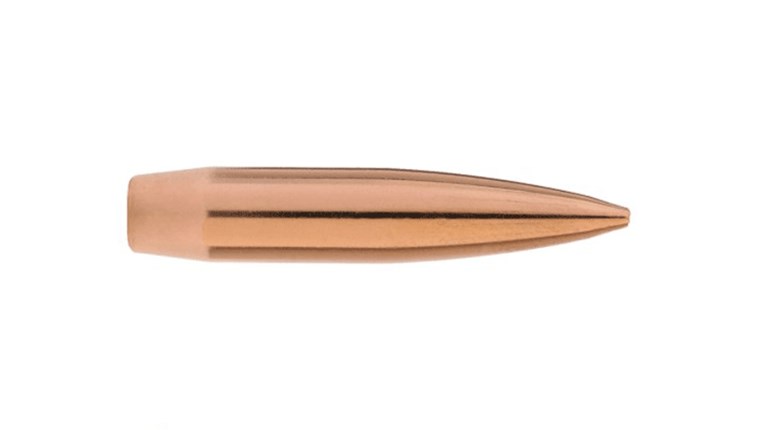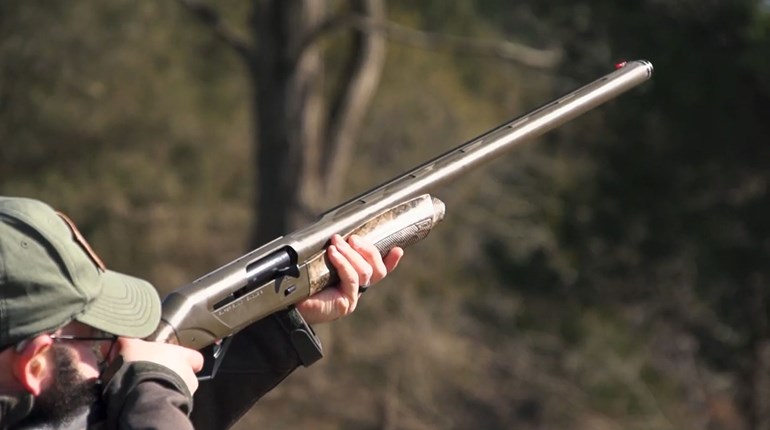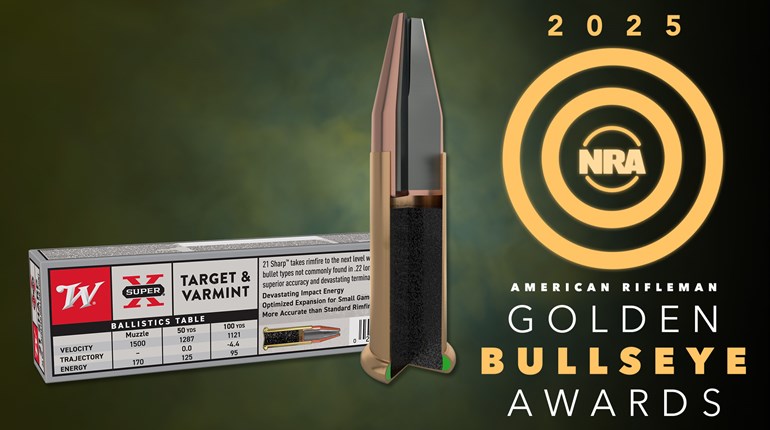
Eddie was 12 years old and a bear hunt didn’t seem like too much. Not for him. As a matter of fact he’d told his father he wanted to hunt bear more than anything. His father, Greg, considered that awhile. Eddie had been shooting his rifle a lot. Shooting pretty well, too. Eddie could make the metal plate at 300 yards go clang every time. Eddie had hunted a good bit already. Shot deer and hogs and small game as a matter of fact. Maybe he was ready.
Even so, Greg couldn’t take his son just anywhere. This needed to be just the right experience, a kind of controlled rite of passage. He didn’t want some over-macho guide belittling his son. Not now, not when he’s just getting started. Nor did he want his son in a crusty bear camp with men he didn’t know all having a raucous time telling over-the-top tales of backcountry hunts gone awry.
He wanted his son to have a chance to persevere and succeed and to thereby walk out of the forest a stronger, better young man. This was a coming-of-age adventure and he didn’t want anything to step on that.
There weren’t any bears on his family ranch in Oklahoma, so after considering places from Alaska and Saskatchewan, Greg put his finger on Idaho. The Flying B Ranch would be perfect for Eddie. The accommodations the ranch offers for a spring bear hunt in the Rocky Mountain wilderness are just the right mix of adventure and comfort. The people are professionals. And they have lots of bears. This would be the perfect bear hunt for Eddie.
Greg knows all this because he has spent his career helping hunters choose just the right experiences. In fact, his reputation for finding clients dream trips is so good the NRA recently signed an agreement with him to start NRA Outdoors. NRA Outdoors is an outfitting service that gives deals to NRA members. Even better, it’s a service that has a proven list of more than 300 quality outfitters from around the world. Just log on to NRAOutdoors.com and select a species and/or a location and you’ll get a list of quality trips for everything from elk to brown bear to Cape buffalo to marlin. When you have a good idea of where you want to go and what you want to hunt and/or fish for, contact Greg’s team. They’ll book your adventure and give you detailed advice.
If you’re unsure of what adventure to chose, no problem: They’ll get you advice from the sources. They’ll tell you how the elk population is in a specific unit or how the pheasant hatch was the previous spring. They’ve likely been there; if not, they’ll put you in touch with someone who has. They’ll even send you a list of recommended gear. And they’ll offer you deals on the gear you’ll need.
The best thing is they don’t just check on outfitters once and then put them on their list. They continually make sure their outfitters have excellent hunts and good camps staffed with trustworthy people. If outfitters falter, they’re off the list. This is how you can go on a hunt in the backcountry with a 12-year-old with confidence that you’ll have a positive experience and a quality hunt.
After choosing the right outfitter, Greg bought his son a pair of hunting boots. “Here,” he said, handing the boots to Eddie, “you’ll need to break these in because we’re going on that bear hunt.”
Eddie wore the boots everywhere, even to school. When people asked why he was wearing big, camouflage boots, he said, “’Cause I need to break them in for my bear hunt in Idaho—duh!”
Into Bear Camp
In late April we stand at a trailhead in Idaho.
Greg watches Eddie step his right boot into a stirrup. He almost speaks up, but holds his tongue as Jeremy, a guide with the Flying B, says, “Not with your right foot … not unless you want to ride backwards Eddie.”
Eddie smiles, switches to his left foot and swings his right foot over the saddle. Jeremy shortens the stirrups to Eddie’s boots. They sure are worn in and now they’re in stirrups ready to ride into bear camp.
The horses start single file up a trail beside the Selway River, which is high with whitewater in places from melting snow. We’re going 15 miles into Idaho’s backcountry and Eddie can’t sit still, not even on the horse. He’s bouncing in the saddle as we ride beneath pine-shaded mountains all greening in April sunshine.
Everything new is an adventure to Eddie. He has the look of a young pup, unbridled enthusiasm and legs too long for his still-growing body. Soon Eddie’s mood and manner bring out the boy in everyone as the horses follow the cool path into the wilderness. Somewhere along the trail one of the hunters finds out Eddie has a girlfriend. Oh, the teasing sure starts then. By the time the horses stop under pines near three white wall tents, Eddie is blushing and fending off jabs from all the men.
Eddie’s already learning a little about being a man in hunting camp. Never give the others an edge. Never tell them anything they can rib you about. Always be ready to give it right back, but not too much, just enough. But Eddie is laughing and enjoying the attention. Then none of us can believe what they have in store for us.
Greg chose well. This sure isn’t some rough bear camp with men in five-day sweat poking a stick into mystery stew. The Flying B sent in a chef. “The eggs made it,” says the chef as he unbuckles a bag that rode in on a mule’s hairy back.
“They spooked once and one of the mules went down the embankment,” says a guide, “but he didn’t land in the Selway so we have eggs.”
In the wall tents are cots and lanterns and wood stoves. After salmon for dinner and a lot of campfire banter everyone sleeps immediately in the cool mountain air and then we find out something else about bear camp. You get to sleep in.
“No point marching out in the dark,” says Arby, our guide. “The bear hunting doesn’t get good until mid-morning. The best time of the day is late afternoon.”
So the bears sleep in. Sensible creatures, we all decide. They crawl out of their dens in these Idaho mountains sometime in April, but for a few weeks or so don’t get too far from their cozy dens. They sleep in mornings before meandering out onto open hillsides looking for the spring’s first green grasses. If the day is overcast and cool they may stay out. More likely they’ll have a midday siesta and pop out later in the afternoon when hillsides succumb to shadows—smart bears.
Eddie takes a bite of bacon and drops his fork. He’s looking at his dad. “These are good,” he says, “way better than the turkey bacon you use back home. You need to make real bacon, Dad.”
Greg smiles, knowing the food might not be Spartan, but the hike will soon build character.
The Search and the Shot
Eddie’s boots are clomping up a trail in a river gorge. His Tikka T3 Lite chambered in .308 is slung over his shoulder. He starts out with a raincoat and pants but takes them off and stuffs them in his dad’s pack—what are dads for anyway? But Eddie hasn’t complained once. Every step takes us higher up a mountain gorge and we’re all huffing a bit. Meanwhile Greg keeps pace with walking sticks. He had knee surgery just a few months ago but keeps smiling as he keeps pace. The last thing he wants to do is let down Eddie.
I ask Greg what happened to his knee and he says, “A Jeep hit me in my kitchen.”
“In your what?”
He tosses his head and explains, “The driver was a young girl running from the police. She lost control in our residential neighborhood and the next thing I know I’m under this Jeep on my kitchen floor.”
Eddie had just left the kitchen and Greg was thankful for that. Now he’s wearing a knee brace and is here against doctor’s advice, but is optimistic and jovial about the whole thing.
As we stop to glass openings between pines above I’m thinking you just can’t count on anything. You can even get run over by a Jeep in your kitchen. But you can have a say in how you take it. Greg is rolling with the punches. He has just the right level of realistic optimism to adjust and still take his boy on a father-and-son hunt in the wilderness—something neither will ever forget.
I stop asking about Jeeps in the kitchen when we notice wolf tracks in mud on the trail. We have wolf tags so we’re awfully interested. As Idaho has struggled to come up with a strategy to control the introduced wolf population, they’ve made it easier to get tags and have lengthened the season.
“The wolves cleaned the elk almost entirely out,” Arby says as he kneels down for a closer look at the tracks. “In elk season there used to be a dozen elk camps back along the trail we rode in on. All filled with hunters, too. Now maybe a few guys come out just to get away. The elk are mostly gone. The mule deer are way down too.”
The elk, he then explains, used to be on top. He points to far-off grassy parks. Up there in the open country big packs of wolves had an easy time encircling and killing elk. So the elk that survived learned to stay in densely wooded, rough terrain in the middle of the mountainsides. A few survive that way today, Arby says. Now since the elk herd crashed the wolves have dispersed. Some are still here, of course, but their packs are smaller as their prey base is a puny percentage of what it was. The others are off reducing herds elsewhere. These changes make me wonder if the elk can make a comeback and find a better balance with their predators, both four-legged and two-legged.
No doubt the ecosystem here was thrown out of the balance it found without wolves. Now the state is struggling to find a new balance that still includes a healthy elk population and wolves. Idaho, being a mostly rural and therefore sensible state, sees hunters as an economical and natural part of that balance. This is important, as some would like to cut humans right out of the ecosystem. They don’t think humans belong, even though people have always hunted. Even this big, rough country is shaped by everything we do—or, perhaps, don’t do.
Seeing Eddie in this context says something too. We watch as he carefully puts down his rifle and splashes into a stream to cool his face. He is a fresh reminder that we need to be able to stay a part of all of this, that young hunters need the chance to play an active role in these ecosystems as well. We just have to find the right balance. We’re all a part of the natural ecosystem and always have been. People can remain in the wild, as part of the wild; not conquerors of nature, but as active participants. If we were just here hiking, we would be only observers and Eddie wouldn’t get nearly the same experience.
“Gosh, Dad, this water feels good,” Eddie says, splashing his father, and then we continue to climb and glass mountainsides for black bears.
An hour later I’m walking with Arby and he points a thumb back at Eddie and says, “That kid is a good one, being brought up right. A few years ago we had another 12-year-old boy in one of our deer camps. This kid had never hunted before and all these men kept telling him to shoot and kill this doe. The kid finally shot and wounded the deer. It took a lot of doing to finish that wounded doe. It was miserable. The kid left with this awful look in his eyes. If they’d only taught him to shoot and took him out for small game first he would have grown to understand hunting and why it is right. Instead I’ll bet that kid never wanted to go hunting again.”
We never see a bear. The next morning we ascend switchbacks up another mountainside. We cut back and forth, gaining altitude and stopping to gasp. Eddie’s boots are dragging. Greg is grunting. The bears are spread out this year. Spring came early and the mountainsides greened-up in April showers weeks before they usually do. The bears don’t have to search south-facing slopes for green grass; they can find grass and other edible vegetation everywhere, even under the timber.
“Never seen it so green here in April,” says Arby. But that’s hunting. Come mid-afternoon we spot a bear but by the time we slog down a slope steep enough to frighten skiers used to double black diamonds the bear is gone.
On day three we go up a ravine several miles upriver on the Selway. We slog uphill for 50 or 100 feet then stop to gasp and groan. When muscles stop burning we go again. Eddie is quiet now, but still smiling and eating Kit Kat bars. We earn a look across a panorama of wild mountains and spot a color-phase bear.
It takes an hour to get there through folds in the landscape that hide deep ditches and blowdowns. Finally we’re glassing grassy patches between ponderosa pines on the opposite side when Greg sees a big black bear, a different bear. It’s as black as a well bottom and as big as they get.
The bear is more than 350 yards away and the shot is tough. Even though Eddie could always make that 300-yard metal plate ring, we decide to get closer. We go down the slope and get within 150 yards but just as Eddie gets on his gun the bear steps into a copse of trees. We wait as the sun sets but the bear never reappears.
Eddie says, “Let’s just camp out here. He’ll come out of there in the morning.”
He means it, too. But we all know none of us would mean it after midnight when we’d be cold and without dinner and maybe wet from a night rain in the mountains.
We almost have to drag him from the spot. This is a good sign. He’s stubborn. He’s willing to work for his reward.
The next morning, the last morning, Eddie again goes up the ravine from the first day. He has this resolute look on his young face. He’s all joy and determination. His muscles are there but lean along growing limbs. We’re all proud of him. This time there’s no holding him back. In the afternoon they see a bear walking along a hillside opposite a roaring stream. They move in and Eddie is on his gun in moments and then his gun goes off and the bear rolls down the hillside. One shot at 220 yards and the bear is done.
Another member of camp had missed three times. Not Eddie. No one else in camp had bagged a bear. But Eddie had. He stood up and shot well and everyone in camp couldn’t have been happier that he did.





































